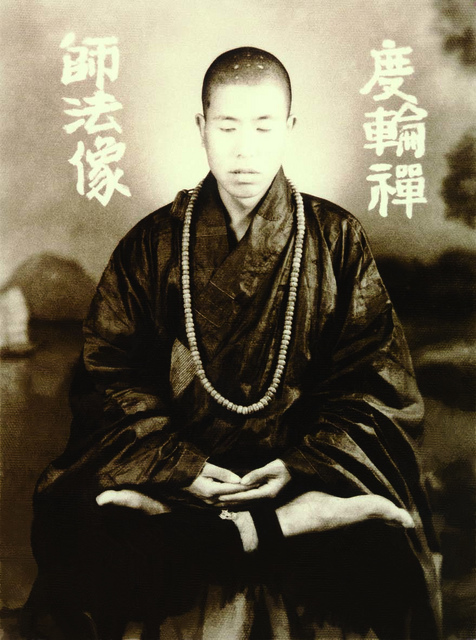|
Hiroshi Motoyama
was a Japanese parapsychologist, spiritual instructor and author whose primary topic was spiritual self-cultivation and the relationship between the mind and body. Motoyama emphasized the meditative practices of Samkhya/Yoga, karma, reincarnation and Hindu theories of the chakras. Motoyama died in September 2015 at the age of 89. Theory and Method Dr. Motoyama's philosophical system was based on his experiences of meditation. His philosophy was based on the idea that no individual philosophical system is without its faults. Because of this, his philosophy appears to be an eclectic blend of seemingly disparate philosophies, but this is far from the case. His system is centralized upon Samkhya philosophy due to its explanatory efficacy, but primarily because of its utilization by Patañjali. Because of the attention to detail found in the Yoga Sutras of Patanjali, Dr. Motoyama emphasizes the eight steps of yogic training. However, he broadens the scope of samkhya here, extending ... [...More Info...] [...Related Items...] OR: [Wikipedia] [Google] [Baidu] |
Buddhist Writers
Buddhism, also known as Buddhadharma and Dharmavinaya, is an Indian religion and philosophical tradition based on teachings attributed to the Buddha, a wandering teacher who lived in the 6th or 5th century BCE. It is the world's fourth-largest religion, with about 500 million followers, known as Buddhists, who comprise four percent of the global population. It arose in the eastern Gangetic plain as a movement in the 5th century BCE, and gradually spread throughout much of Asia. Buddhism has subsequently played a major role in Asian culture and spirituality, eventually spreading to the West in the 20th century. According to tradition, the Buddha instructed his followers in a path of development which leads to awakening and full liberation from '' dukkha'' (). He regarded this path as a Middle Way between extremes such as asceticism or sensual indulgence. Teaching that ''dukkha'' arises alongside attachment or clinging, the Buddha advised meditation practices and eth ... [...More Info...] [...Related Items...] OR: [Wikipedia] [Google] [Baidu] |
2015 Deaths
This is a list of lists of deaths of notable people, organized by year. New deaths articles are added to their respective month (e.g., Deaths in ) and then linked below. 2025 2024 2023 2022 2021 2020 2019 2018 2017 2016 2015 2014 2013 2012 2011 2010 2009 2008 2007 2006 2005 2004 2003 2002 2001 2000 1999 1998 1997 1996 1995 1994 1993 1992 1991 1990 1989 1988 1987 1986 Earlier years ''Deaths in years earlier than this can usually be found in the main articles of the years.'' See also * Lists of deaths by day * Deaths by year (category) {{DEFAULTSORT:deaths by year ... [...More Info...] [...Related Items...] OR: [Wikipedia] [Google] [Baidu] |
1925 Births
Events January * January 1 – The Syrian Federation is officially dissolved, the State of Aleppo and the State of Damascus having been replaced by the State of Syria (1925–1930), State of Syria. * January 3 – Benito Mussolini makes a pivotal speech in the Italian Chamber of Deputies (Italy), Chamber of Deputies which will be regarded by historians as the beginning of his dictatorship. * January 5 – Nellie Tayloe Ross becomes the first female governor (Wyoming) in the United States. Twelve days later, Ma Ferguson becomes first female governor of Texas. * January 25 – Hjalmar Branting resigns as Prime Minister of Sweden because of ill health, and is replaced by the minister of trade, Rickard Sandler. * January 27–February 1 – The 1925 serum run to Nome (the "Great Race of Mercy") relays diphtheria antitoxin by dog sled across the U.S. Territory of Alaska to combat an epidemic. February * February 25 – Art Gillham records (for Columbia Re ... [...More Info...] [...Related Items...] OR: [Wikipedia] [Google] [Baidu] |
My Copy Indicates 1981
My or MY may refer to: Arts and entertainment * My (radio station), a Malaysian radio station * Little My, a fictional character in the Moomins universe * ''My'' (album), by Edyta Górniak * ''My'' (EP), by Cho Mi-yeon Business * Marketing year, variable period * Model year, product identifier Transport * Motoryacht * Motor Yacht, a name prefix for merchant vessels * Midwest Airlines (Egypt), IATA airline designation * MAXjet Airways, United States, defunct IATA airline designation Other uses * ''My'', the genitive form of the English pronoun ''I'' * Malaysia, ISO 3166-1 country code ** .my, the country-code top level domain (ccTLD) * Burmese language (ISO 639 alpha-2) * Megalithic Yard, a hypothesised, prehistoric unit of length * Million years See also * MyTV (other) * μ ("mu"), a letter of the Greek alphabet * Mi (other) * Me (other) * Myself (other) '' Myself'' is a reflexive pronoun in English. Myself may also refe ... [...More Info...] [...Related Items...] OR: [Wikipedia] [Google] [Baidu] |
Śūnyatā
''Śūnyatā'' ( ; ; ), translated most often as "emptiness", "Emptiness, vacuity", and sometimes "voidness", or "nothingness" is an Indian philosophical concept. In Buddhism, Jainism, Hinduism, and Indian philosophy, other Indian philosophical traditions, the concept has multiple meanings depending on its doctrinal context. It is either an Ontology, ontological feature of reality, a meditative state, or a Phenomenology (philosophy), phenomenological analysis of experience. In Theravada, Theravāda Buddhism, ' often refers to the Anatta, non-self (Pāli: ', Sanskrit: ') nature of the Skandha, five aggregates of experience and the Āyatana, six sense spheres. ' is also often used to refer to a Buddhist meditation, meditative state or experience. In Mahayana, Mahāyāna Buddhism, ' refers to the tenet that "all things are empty of intrinsic existence and nature (''svabhava'')", but may also refer to the Buddha-nature teachings and primordial or empty awareness, as in Dzogchen ... [...More Info...] [...Related Items...] OR: [Wikipedia] [Google] [Baidu] |
Mahayana
Mahāyāna ( ; , , ; ) is a term for a broad group of Buddhist traditions, Buddhist texts#Mahāyāna texts, texts, Buddhist philosophy, philosophies, and practices developed in ancient India ( onwards). It is considered one of the three main existing branches of Buddhism, the others being Theravāda and Vajrayāna.Harvey (2013), p. 189. Mahāyāna accepts the main scriptures and teachings of Early Buddhist schools, early Buddhism but also recognizes various doctrines and texts that are not accepted by Theravada Buddhism as original. These include the Mahāyāna sūtras and their emphasis on the ''bodhisattva'' path and Prajnaparamita, ''Prajñāpāramitā''. Vajrayāna or Mantra traditions are a subset of Mahāyāna which makes use of numerous Tantra, tantric methods Vajrayānists consider to help achieve Buddhahood. Mahāyāna also refers to the path of the bodhisattva striving to become a fully awakened Buddha for the benefit of all sentience, sentient beings, and is thus also ... [...More Info...] [...Related Items...] OR: [Wikipedia] [Google] [Baidu] |
Jhāna
In the oldest texts of Buddhism, ''dhyāna'' () or ''jhāna'' () is a component of the training of the mind ('' bhavana''), commonly translated as meditation, to withdraw the mind from the automatic responses to sense-impressions and "burn up" the defilements, leading to a "state of perfect equanimity and awareness ('' upekkhā- sati- parisuddhi'')." ''Dhyāna'' may have been the core practice of pre-sectarian Buddhism, in combination with several related practices which together lead to perfected mindfulness and detachment. In the later commentarial tradition, which has survived in present-day Theravāda, ''dhyāna'' is equated with "concentration", a state of one-pointed absorption in which there is a diminished awareness of the surroundings. In the contemporary Theravāda-based Vipassana movement, this absorbed state of mind is regarded as unnecessary and even non-beneficial for the first stage of awakening, which has to be reached by mindfulness of the body and ''vipassa ... [...More Info...] [...Related Items...] OR: [Wikipedia] [Google] [Baidu] |
Purusha
''Purusha'' (, ʊɾʊʂᵊ ) is a complex concept whose meaning evolved in Vedic and Upanishadic times. Depending on source and historical timeline, it means the cosmic being or self, awareness, and universal principle.Karl Potter, Presuppositions of India’s Philosophies, Motilal Banarsidass, , pp 105–109 In early Vedas, ''Purusha'' was a cosmic being whose sacrifice by the gods created all life. This was one of many creation myths discussed in the Vedas. In the Upanishads, the ''Purusha'' concept refers to the abstract essence of the Self, Spirit and the Universal Principle that is eternal, indestructible, without form, and all-pervasive. In Samkhya philosophy, ''Purusha'' is the plural immobile cosmic principle, pure consciousness, unattached and unrelated to anything, which is "nonactive, unchanging, eternal, and pure". ''Purusha'' uniting with '' Prakṛti'' (matter) gives rise to life. In Kashmir Shaivism, ''Purusha'' is enveloped in five sheaths of time (''kā ... [...More Info...] [...Related Items...] OR: [Wikipedia] [Google] [Baidu] |
Meditation
Meditation is a practice in which an individual uses a technique to train attention and awareness and detach from reflexive, "discursive thinking", achieving a mentally clear and emotionally calm and stable state, while not judging the meditation process itself. Techniques are broadly classified into focused (or concentrative) and open monitoring methods. Focused methods involve attention to specific objects like breath or mantras, while open monitoring includes mindfulness and awareness of mental events. Meditation is practiced in numerous religious traditions, though it is also practised independently from any religious or spiritual influences for its health benefits. The earliest records of meditation ('' dhyana'') are found in the Upanishads, and meditation plays a salient role in the contemplative repertoire of Jainism, Buddhism and Hinduism. Meditation-like techniques are also known in Judaism, Christianity and Islam, in the context of remembrance of and prayer and dev ... [...More Info...] [...Related Items...] OR: [Wikipedia] [Google] [Baidu] |
Yoga Sutras Of Patanjali
The ''Yoga Sutras of Patañjali'' (IAST: Patañjali yoga-sūtra) is a compilation "from a variety of sources" of Sanskrit sutras (aphorisms) on the practice of yoga – 195 sutras (according to Vyasa, Vyāsa and Krishnamacharya) and 196 sutras (according to others, including BKS Iyengar). The ''Yoga Sutras'' were compiled in India in the early centuries CE by the sage Patanjali, who collected and organized knowledge about yoga from Samkhya, Buddhism, and older Yoga traditions, and possibly another compiler who may have added the fourth chapter. He may also be the author of the ''Yogabhashya'', a commentary on the ''Yoga Sutras'', traditionally attributed to the legendary Vedic sage Vyasa, but possibly forming a joint work of Patanjali called the ''Pātañjalayogaśāstra''. The ''Yoga Sutras'' draw from three distinct traditions from the 2nd century BCE to the 1st century CE, namely Samkhya, Buddhism traditions, and "various older ascetic and religious strands of speculatio ... [...More Info...] [...Related Items...] OR: [Wikipedia] [Google] [Baidu] |




